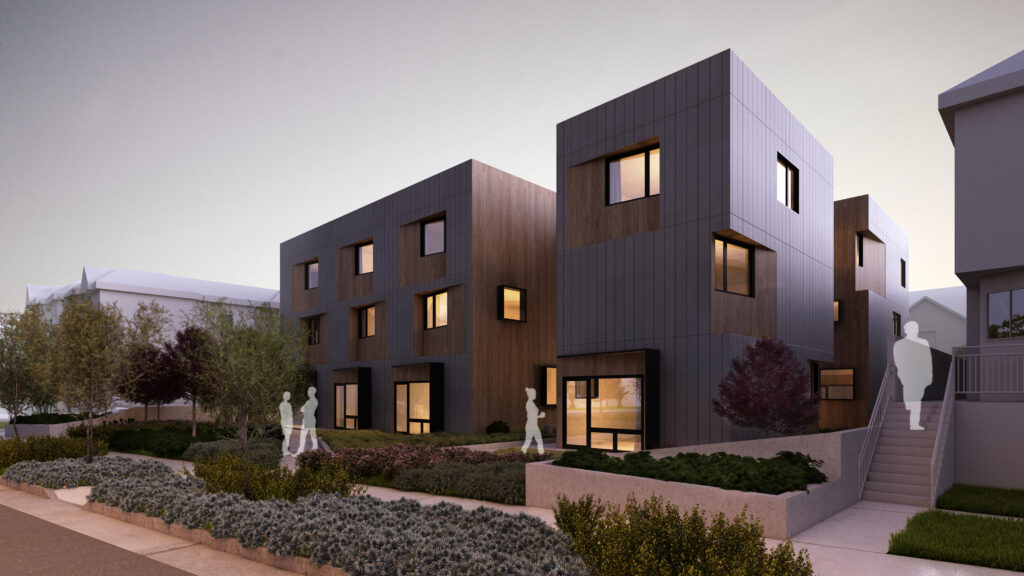With the houseless population skyrocketing, it’s clear new ideas are needed to stem change. On July 22nd, the AIA Design for Dignity conference did just that – brought leaders across industries to open the conversation to the A/E/C community and inspire solutions for the growing housing crisis.
The complexity of the housing crisis is hard to navigate, but it’s clear that safe shelter is a fundamental human right. In 2020, the number of unhoused individuals in Los Angeles reached 66,000. This means that individuals are becoming houseless faster than we are currently able to aid. Low-income housing is a key factor in restoring the lives of the houseless, and by 2029 we will need 32,500 units to keep up with the increasing crisis.

Opportunities for the A/E/C industry to be part of the solution are all around us. For the design of the Wende Creative Community Center in Culver City, we came together with the Artistic Freedom Initiative to design dedicated housing units for low-income artists on campus. Our work on the Columbus Townhomes responds to the socioeconomic demands for more low-income housing while employing an open space design rather than overwhelming the neighborhood with a high-density project. Solving the housing crisis with creativity and in conjunction with other institutions, leaders, and initiatives is essential. If you’d like to continue learning how design can be used to help end the housing crisis, check out some of our projects: Gertrude St. Affordable Housing, Mid-City Mixed Use, Eagle Rock Mixed-Use.
AUX’s project manager, Tim Vordtriede, and job captain, Jennifer Alfaro, compiled their takeaways from the conference to progress the conversation:
– Trust is crucial for the houseless population relying on a system that’s riddled with complexities and lack of the proper roles to expedite discussion and decision-making
– Establishing a house-sharing program for parolees to while in transition
– Funding to support the Skid Row Housing Trust that works with a diverse group of service providers to offer our residents access to support, addressing the vast causes of homelessness
– Multiple solutions need to be engaged and synergistically combined



